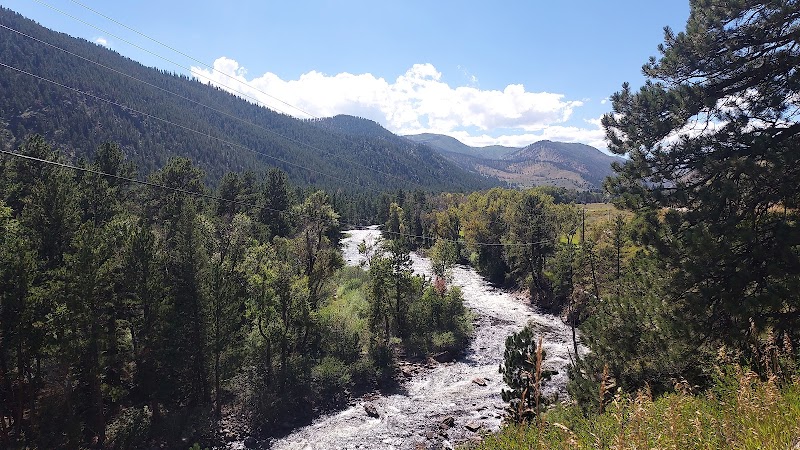
Celebrating Life on Water: Inle Lake New Year Festival in Nyaung Shwe
Inle Lake’s New Year Water Festival in Nyaung Shwe bursts with vibrant boat races, cultural rituals, and waterside celebrations. Experience one of Myanmar’s most dynamic aquatic festivals with practical tips to navigate the crowds, timing your visit, and capturing the spirited energy of this unique event.
Secure Your Boat Spot Early
Boat space fills quickly during festival days—arrive early morning to book a stable vessel for the best views and safe maneuvering among the crowded lake.
Stay Hydrated and Protected
April’s sun in Shan State is intense; bring sunblock, a wide-brimmed hat, and carry at least 2 liters of water to avoid dehydration during long hours on the lake.
Wear Non-Slip Footwear
Boat decks and wooden piers are slippery from water sprays and algae—choose sturdy shoes with good grip to prevent falls while moving between boats and shore.
Plan for Festival Crowds
Expect thick crowds on land and water; time your photography or quiet moments in early mornings or late afternoons when the festival energy softens.
Celebrating Life on Water: Inle Lake New Year Festival in Nyaung Shwe
Each year as the dry season wanes in Shan State, Inle Lake awakens with the pulse of its New Year Water Festival—a vivid display of culture, community, and aquatic spectacle. Set in Nyaung Shwe, the town that acts as your gateway to the lake’s unique charm, this festival invites you not just to observe, but to become part of a fiercely living tradition. Boats crowd the shimmering water, engines humming and paddles cutting—racing against one another under skies barely holding back the monsoon promise.
The festival spans a few days typically in April, aligning with Myanmar’s traditional New Year and close to the Thingyan water festival celebrated nationwide. However, Inle’s version is distinct, focused on the lake itself: a stage of floating markets, dragon boat races, and ceremonial offerings to the water spirits believed to sustain the life here.
Visitors should arrive early to claim a good vantage point along the lake’s eastern shore or opt for a boat slip, maneuvering among the spirited crowd daring the water’s unpredictable ripples. The scents of grilled fish and lemongrass tea drift through the air while celebrants sprinkle water as a cleansing gesture, renewing bonds with nature and neighbors alike.
Planning your visit around this event means preparing for more than just sightseeing. Expect crowds, uneven boat decks, and humid, sun-drenched days that demand hydration and solid footwear with grip. While the festivities occur on the lake’s flat surface, small hikes around the nearby hills provide sweeping views of the festival’s scale and surrounding landscapes—a useful reminder that beyond the bright chaos, nature holds steady, watching and waiting for the next season’s turn.
Timing is key. Early mornings bring calm waters and softer light, perfect for photography or simply embracing the moment before the races ignite the lake with speed and sound. The late afternoon sun fades into long shadows over the mountains, drawing a curtain on a day alive with laughter and ritual.
This water festival is as much about respecting the lake’s temperament as it is about joining in its joyful assertion of life. With practical planning and a sense of adventure, your visit transforms from remote observation to immersive participation—alive in the swirling spirit of Inle Lake.
Nearby Trips
All Adventures
Boat Charters
Water Activities
Adventures near Nyaung Shwe, Shan State
Discover the unique and memorable adventures that make Nyaung Shwe, Shan State special.
Frequently Asked Questions
When exactly is the Inle Lake New Year Festival celebrated?
The festival typically unfolds in mid-April, coinciding with Myanmar’s traditional New Year and closely linked to the countrywide Thingyan water festival. Dates can vary slightly each year based on the Burmese lunar calendar.
Is it possible to join the boat races or are they only for locals?
Participation in races is mostly reserved for local rowing teams and fishermen. Visitors can observe from boats or shore but should not try to disrupt the tightly organized competitions.
What wildlife might I encounter during the festival?
Inle Lake is home to endemic species like the Inle carp and various water birds. Festival crowds can scare off some wildlife, but early mornings may reward visitors with glimpses of herons, kingfishers, and floating gardens’ unique flora.
How crowded does Nyaung Shwe get during the festival?
Nyaung Shwe can become busy with tourists and locals alike, filling guesthouses and restaurants. Booking accommodation at least a month in advance is advisable for a smooth stay.
Are there any local customs visitors should be aware of during the festival?
Respect is crucial: water sprinkling is a symbolic cleansing, so join in if invited but avoid aggressive splashing. Dress modestly especially when visiting monastery ceremonies and follow local etiquette when taking photographs.
What environmental concerns affect the festival site?
The lake faces challenges from pollution and over-tourism. Visitors are encouraged to avoid plastic waste, support eco-friendly vendors, and minimize disturbances to the fragile water ecosystem.
Recommended Gear
Non-slip Waterproof Shoes
Ensures stable footing on slick boat decks and wet wooden piers common during the event.
Wide-brimmed Hat
Protects from strong sun glare during peak daylight hours on the open water.
Reusable Water Bottle
Staying hydrated across the festival’s long hours is critical; refill points may be limited on watercraft.
Light Rain Jacket
Useful if your visit extends into the early rainy season when sudden showers can dampen festivities.
Local Insights
Hidden Gems
- "Sunset viewpoint at Taung Chauk hill offers panoramic angles on the festival crowds below."
- "Shan floating gardens where farmers grow tomatoes and vegetables in aquatic beds."
Wildlife
- "Inle carp (a rare fish species unique to the lake)"
- "Various water birds including the grey-headed lapwing and Indian spot-billed duck."
History
"The festival intertwines with beliefs honoring Naga water spirits and traditional Shan New Year customs, offering a rare glimpse into the region’s preserved cultural rhythm."
